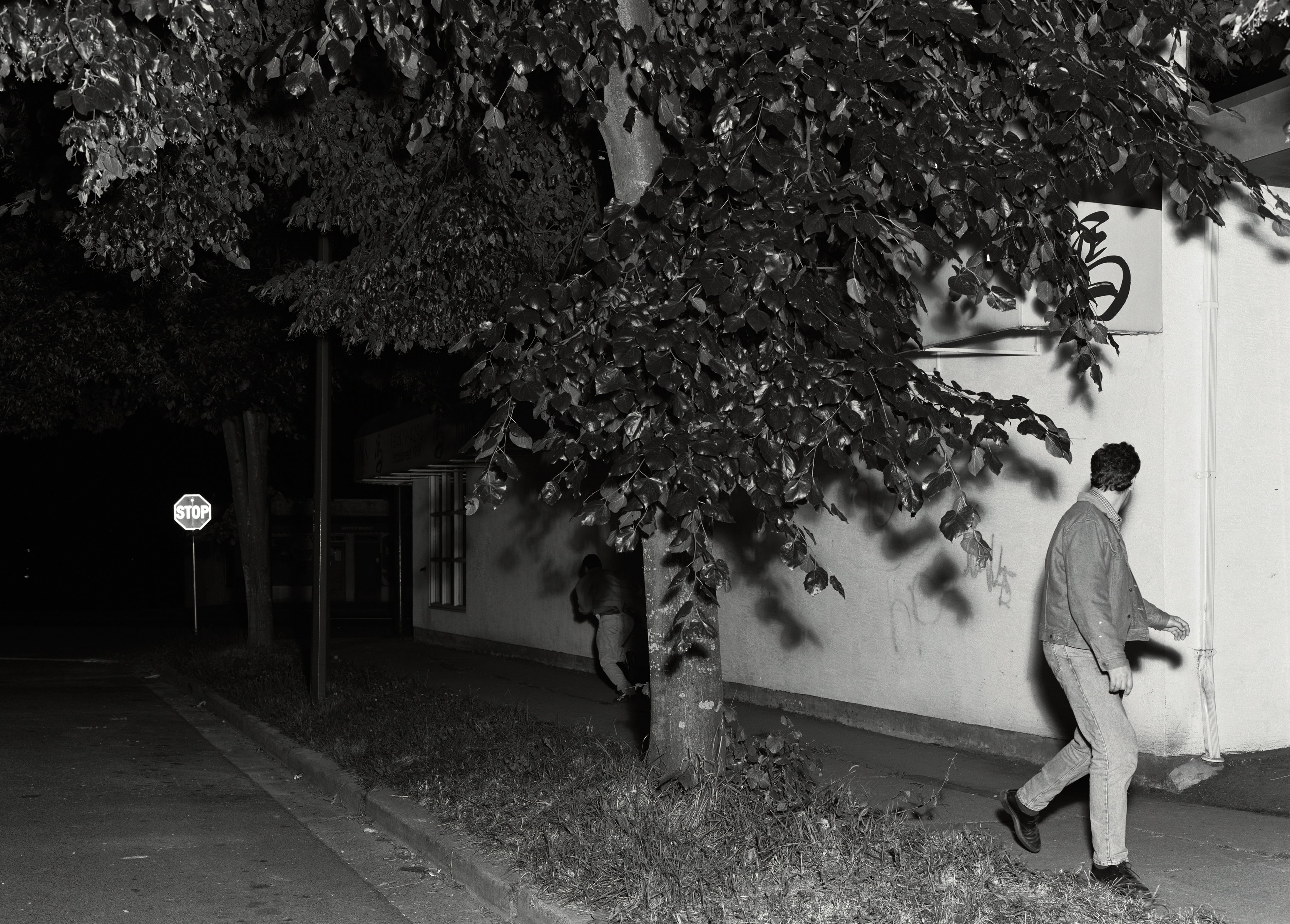Jeff Wall




Jeff Wall is best known for constructing and photographing elaborate mise-en-scènes, which he displays in wall-mounted light boxes as large-scale colour images. He takes his cues from the neorealism of Italian cinema, working with nonprofessional actors to stage scenes of everyday life. The above is Jeff Wall’s image titled, ‘Passer-by’ (1996). It is a street photography image where Jeff has captured a naturally occurring event. An event that he has encountered almost by accident that portrays a scene and can be interpreted beyond the frame by using intuition. This encapsulates one of Wall’s strong views of what makes an intriguing and meaningful image.

The image is of a sidewalk in what seems like an urban American suburb. Framed in the centre of the image is a tree, and on either side of the tree we see two men. The man in the foreground is wearing denim jeans and a denim jacket, we cannot see his face as he is looking over his shoulder at the other man while continuing to walk. The other man in the background is running towards a stop sign in the distance in the opposite to the man in the foreground. Overall the image has an overwhelming feeling with a low exposure and abundance of shadows the image has a sober emotion throughout. The image has a wide tonal range with the man in the foreground being well lit, along with an illuminated white wall which possesses the images highlights. In the background where the man is running is very dark and underexposed giving the images its pure black’s and therefore this wide tonal range. This tonal range connotes a sense of innocence for the well exposed man in the foreground who can be seen looking over his shoulder into what can seem like a world of darkness he is leaving behind. The man in the background is presented as a more corrupt character in the scene as he can be seen to run towards the theoretical ‘ dark side’. This lighting looks as if it has been achieved using an artificial source of lighting during the night time to achieve the vast contrast between the foreground and background. The lighting casts long shadows from the subjects and the tree in the centre of the image. These shadows aid in making the image significantly more dramatic as it adds more to the dark, ominous aesthetic while introducing a sense of depth. These shadows also connote to the theme of innocence and corruption, almost insinuating the man in the foreground is leaving his dark side behind him. The lighting also adds a shiny highlight to the leaves of the tree in the middle of the image. This gives it a glistening texture adding to the innocence of the foreground, while the background remains without light and therefore keeps a grainy texture adding to the theme of corruption. I think this method of casting shadows shouldn’t be overlooked as it can being a lot more meaning to how photography is interpreted. The development of modern photography has preached a certain aesthetic to be correct, I think Jeff’s work challenges this. Having these drooping shadows can be undesirable by the modern photographer seeking to achieve this ‘correct’ aesthetic with a lot of photographers using fill-lighting to cancel out shadows in the background. Jeff challenged this view and believe in a balance between aesthetics and narrative. He used the shadows to add to the narrative of this image.


Jeff used a narrow aperture to achieve the depth of field in the image and get everything in focus which allows him to tell relay the narrative of innocence and corruption between the foreground and background. Shooting with a closed aperture also aids in underexposing the image and making it appear darker. The way the image is framed where the tree separates the two men and the man who represents corruption is hiding behind the tree almost representing hiding from his true identity.
The above gives further insight into Jeff Wall’s perspective of photography and the importance to investigate pictorialism and how imagery can create art. He talks about how photography is like poetry where all elements of a photos narrative and aesthetic qualities evoke emotion and relay purpose like a poem does. This aligns with the above Quotes from David Company’s So Present, so invisible where Jeff discusses the relationship between the vernacular and the pictorial and how there is no one way to create art. I believe that the strongest pictorial images originate from a documentation of accidental circumstances that outline a subject. I believe art can be interpreted in all images that relay a narrative and also the importance of imagery in accurately documenting in a artistic fashion. I therefore wholly agree with Jeff’s view on photography.
